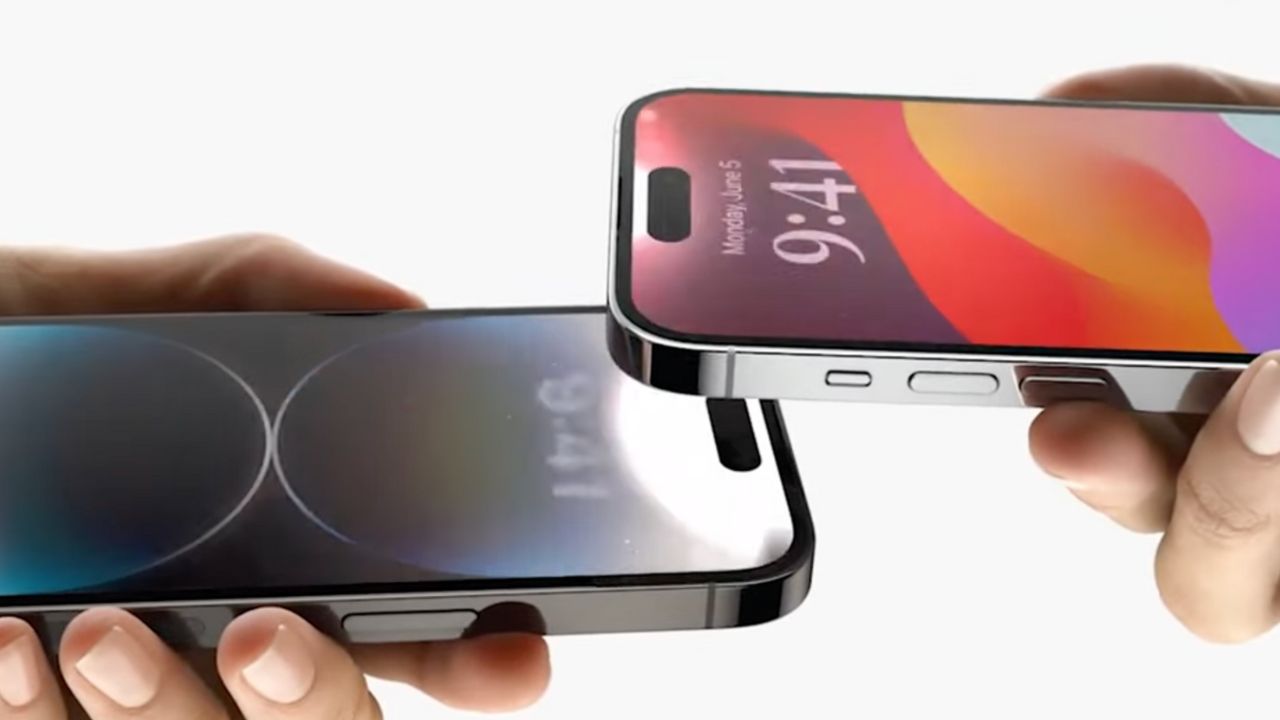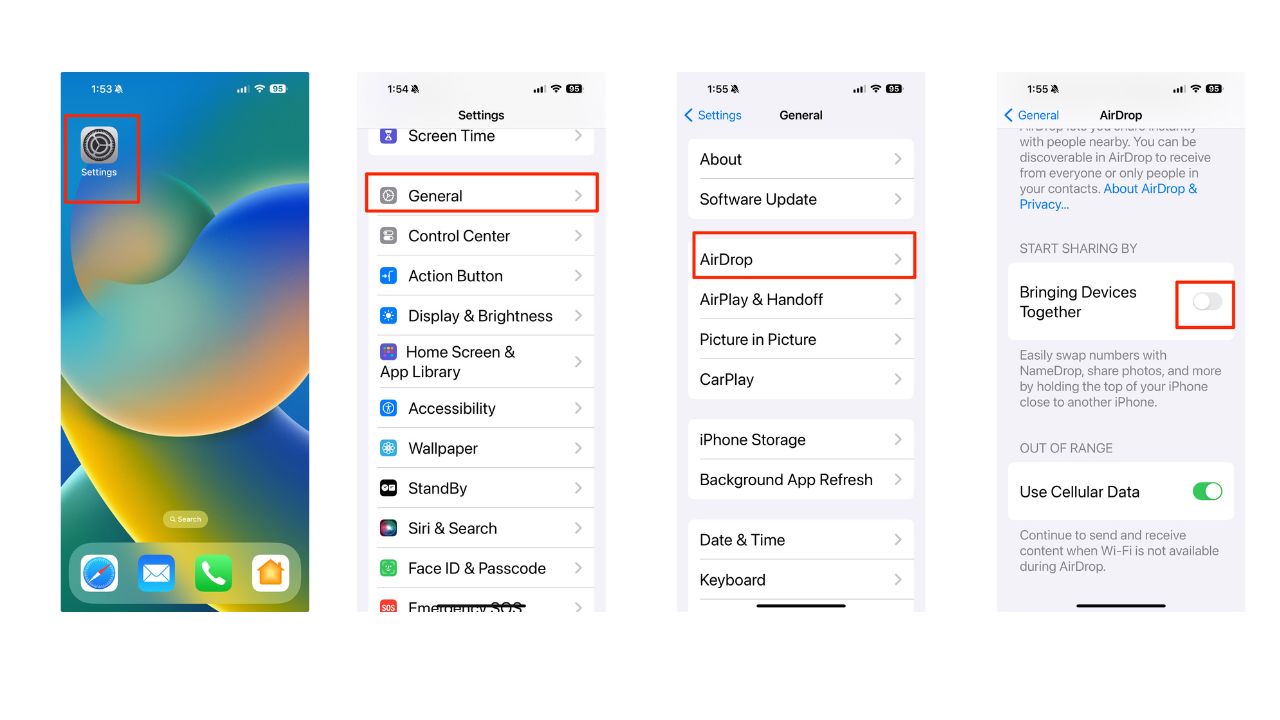In the wake of Apple’s latest software update, iOS 17, police departments across several states including Massachusetts, Illinois and California have issued an urgent advisory to parents. This cautionary message stems from the introduction of a feature called “NameDrop,” which, by default, is activated in the new update.

Credit: Apple
How ‘NameDrop’ works
NameDrop enables the sharing of contact information when iPhones are brought close together, a functionality that, while innovative, poses significant risks if two iPhones are brought physically together head-to-head, particularly to children according to law enforcement.
The police departments of Dighton and Andover in Massachusetts are leading the charge in raising awareness about this feature. They’ve taken to social media to educate the public, especially parents, about the potential dangers associated with NameDrop.

Credit: Apple
MORE: KIDS’ SEARCHES LEADING TO MALWARE THREATS IDENTIFIED IN STUDY
Dangers of ‘NameDrop’ feature to children
Their posts clarify that upon updating to iOS 17, users will find this feature automatically turned on, a default setting that could unwittingly expose personal information.
For parents, the primary concern is the security and privacy of their children. The ease with which contact details can be exchanged merely through proximity increases the risk of this sensitive information falling into the wrong hands.
Keep in mind, it’s highly unlikely your child’s information could be shared by simply coming near a stranger. The specific concern would be if a child is guided or tricked into putting their phone tip to the other tip of a stranger’s phone.
It’s important to note that both iPhones must be unlocked and practically touching each other to use the Name Drop feature. Once a connection is established your phone will vibrate and glow. Then you will get a prompt to share either your phone number or email address. You can also only receive contact information without sharing your own. No information is shared without you clicking one of those options.

Credit: Apple
MORE: SHARENTING PUTS KIDS IN A DANGEROUS PREDICAMENT
How to disable ‘NameDrop’ feature on iPhone
Recognizing this threat, the police have provided clear instructions on how to disable NameDrop. If you are a parent and want to air on the safe side, here’s how to turn off NameDrop.
- On iPhone, launch Settings app
- Tap General
- Select AirDrop
- Toggle OFF the option for Bringing Devices Together

MORE: 11 THINGS TO ADD TO YOUR PRIVACY CHECKLIST ONLINE ASAP
How NameDrop puts children at risk for predators and cybercriminals
If a stranger were to obtain a child’s contact information via NameDrop, the consequences could be severe. This unauthorized access to email addresses and phone numbers can be exploited by individuals with malicious intent, including predators and cybercriminals.
The introduction of NameDrop raises significant cybersecurity concerns. The ease of information sharing, while a testament to technological advancement, also brings forth new challenges in ensuring digital safety, especially for vulnerable groups like children.
What parents should do for all kids’ phones, tablets and computers
In addition to this privacy setting, I always recommend using parental controls on your young children’s devices and deploying strong antivirus protection to help intercept threats in today’s increasingly growing dangers. You can see the Best Antivirus Protection options and reviews here.
Holiday Special for CyberGuy Readers: My #1 pick is TotalAV, and you can get a limited-time deal for CyberGuy readers: $19 your first year (80% off) for the TotalAV Antivirus Pro package. You won’t find this holiday price lower anywhere!
We reached out to Apple for a comment and was offered guidance and clarity on how NameDrop works.
Apple says,
To cancel NameDrop at any time, a user can simply swipe from the bottom of the display, lock their device or move their device away if the connection has not been established.
Kurt’s key takeaways
The advice from police departments and cybersecurity experts is the safest solution: parents should take proactive steps to adjust the settings on their children’s devices, to mitigate the risks associated with this new feature if they are concerned.
Although, it takes physically putting the tops to two iPhones together for NameDrop to be initiated, children could be persuaded to use the feature by a stranger. Parents should educate their kids accordingly.
Do you think kids consider their own security and safety seriously enough? What else should be done to keep children safe? Let us know in the comments below.
TO GET MORE OF MY SECURITY ALERTS, SUBSCRIBE TO MY FREE CYBERGUY REPORT NEWSLETTER
Copyright 2024 CyberGuy.com. All rights reserved. CyberGuy.com articles and content may contain affiliate links that earn a commission when purchases are made.


